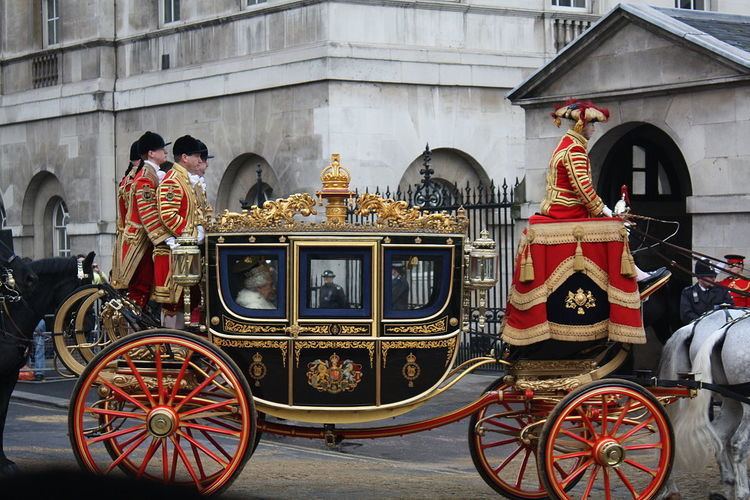 | ||
A footman (plural -men) is a male domestic worker.
Contents
Word history
The designation "running footman" derived from the attendants who ran beside or behind the carriages of aristocrats, many of whom were chosen for their physical attributes. They ran alongside the coach to make sure it was not overturned by such obstacles as ditches or tree roots. They would also run ahead to prepare the destination place for their lord's arrival.
The word was subsequently extended to apply to a household servant, who usually filled glasses, placed and removed dishes etc. while standing at meals, while the master and guests remained seated. The roughly synonymous term lackey may have a similar etymology.
Roles
The first footman was the designation given to the highest ranking servant of this class in a given household. The first footman would serve as deputy butler and act as butler in the latter's absence, although some larger houses also had an under-butler above the first footman.
In a larger household, various footmen might be assigned specific duties (for which there might be a traditional sequence), such as the silver specialist. Usually the footmen performed a range of duties which included serving meals, opening and closing doors, carrying heavy items, or moving furniture for the housemaid to clean behind. The footmen might also double as valets, especially for visiting guests.
Servants
Male servants were paid more than female servants, and footmen were something of a luxury and therefore a status symbol even among the servant-employing classes. They performed a less essential role than the cook, maid or even butler, and were part only of the grandest households. Since a footman was for show as much as for use, a tall footman was more highly prized than a short one, and good looks, including well-turned legs, which were shown off by the traditional footman's dress of stockings worn below knee breeches, were an advantage. Footmen were expected to be unmarried and tended to be relatively young; they might, however, progress to other posts, notably that of butler. One 19th century footman, William Tayler, kept a diary which has been published. He was, in fact, married; but kept his marriage secret from his employers and visited his family only on his days off.
Once a commonly employed servant in great houses, footmen became much rarer after World War I as fewer households could by then afford retinues of servants and retainers. The position is now virtually an historic one although servants with this designation are still employed in the British Royal Household, wearing a distinctive scarlet livery on state occasions.
